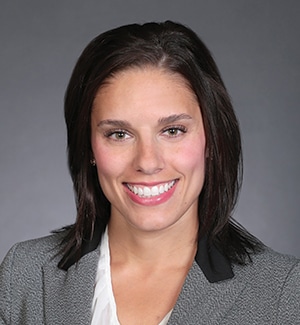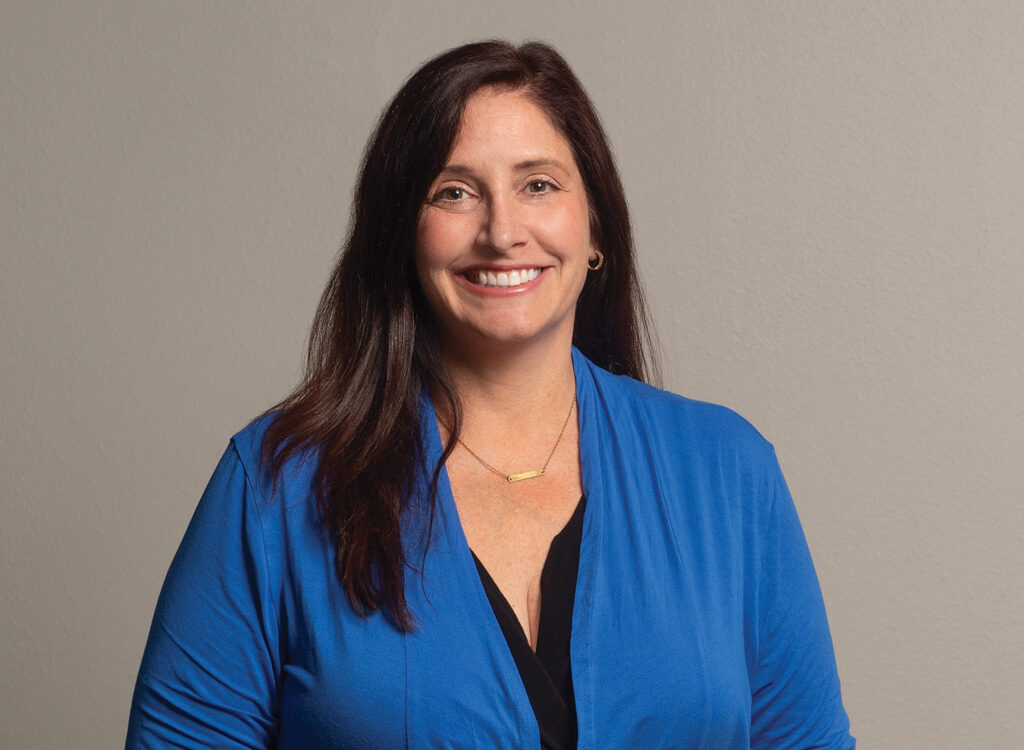DART launches effort to reimagine public transit

Michael Crumb Sep 6, 2024 | 6:00 am
10 min read time
2,473 wordsBusiness Record Insider, Transportation
Jeremy Guenther believes the community’s thinking around access to public transit should be elevated to the same level as access to clean water, electricity and internet service.
Guenther, 44, is an investment operations analyst at Principal Financial Group and rides the Des Moines Area Regional Transit Authority’s Express Route 92 from a bus stop at Buccaneer Arena on Hickman Road in Urbandale to his office downtown.
“The way our communities and culture are structured, you have to have a cellphone and you have to have mobility, you have to have internet access, like utilities,” he said. “I believe it’s important in a community where I live and work and raise my family as options for mobility for everyone. It’s good for employers. It’s good for individuals. It’s good for everyone.”
The married father of two teenagers began riding DART after his family went down to just one car when he and his wife began working remotely during the COVID-19 pandemic. He looked at the DART app and found that he could pick up a bus at the Buccaneer Arena, which is just a four-minute walk from his home. Now he rides DART two to three days a week, and has discovered that not only is it a convenient way to get to and from work, but it has also helped him become part of a community he may not otherwise have known.
It’s building those community connections that will be integral as DART embarks on its mission to reimagine public transit and create a program that will be sustainable for the next 10 years and beyond, leaders of the public transit service said.
Reimagining DART

On the surface, the effort to redesign DART appears to be focused on addressing some of the agency’s budget challenges. But Amanda Wanke, DART’s CEO, said it’s bigger than that.
“It’s really that collaborative effort to transform public transportation,” she said.
She said with all the changes that have been seen in the community in the past 20 years, public transportation needs to change to meet the community’s needs for the future.
“We’re kind of at this tipping point and opportunity … so we need to relook at the system in a way that defines what are we trying to achieve as a community and what do we want to be 20 years from now?”
“This is much more than responding to a financial challenge,” Wanke said. “Yes, there’s that challenge. But more than anything, transit has been an essential part of developing our region. We hear from riders. We see what our competitors are doing and we need to decide what we want to be for the next 20 years.”
Figuring that out will be a process that begins now and will continue through the end of 2025, when planning for the fiscal year 2027 budget begins. Along the way, a request for proposal was issued, with the DART board of commissioners expected to award a contract in October. Until then, the commission will be holding work sessions to further solidify its next steps in the planning process.
Wanke said there are three phases in the redesign, including deciding on outcomes DART wants to achieve, the consulting team redesigning the network and the various levels of investment and opportunities for public input.
“Funding will be a part of that, but underneath there’s conversations about where we’re aligned on funding and governance and all the components that make it work, but before we decide all the components that make it work, what are we trying to be?” Wanke said. “What’s important? Sometimes the other conversations get hard to have until you know a little bit more of what that vision is looking like.”
Determining outcomes to a system redesign could look at topics such as connectivity and accessibility, community value, equity and economic impact, Wanke said.
And sustainability is the soil from which those decisions will grow, she said.
“There’s certainly the economic part, right? We need to not go year to year from a budgeting standpoint,” Wanke said. “We need to know that we have a plan for the future, but then sustainability is really that shared vision. As we look to the future, some of the questions and conversations that are happening are: Is DART working for smaller communities? What’s our goal? Who are we going to try to serve, where are we going to try to serve and how are we going to get there? That’s what that success looks like. When we’re trying to be all these things, we can’t. So I think sustainability is having a clear vision that we’re always working toward.”
Having that clear vision will better enable DART to help the community grow and get people to work, medical appointments, shopping and entertainment throughout the metro, she said.
“We need more teachers, so they’re going to be able to get to school to get their education they need to get that job,” Wanke said. “It’s the Price Chopper worker. You want everybody to have a job and to be able to get to their job. You may only ride the bus during the state fair, but without our fixed routes, we wouldn’t have the fair service. It all ties together into driving our economy and lifting up our community.
“As we look to the next 20 years, we have to be able to adapt to meet the needs of that region and the community,” she said. “When you think about equity and connectivity – people being able to get to jobs and ensuring everyone in our community has options. You think about economic impact. I think it comes back to what we want our region to be and how do we measure success?”
The budget
Leaders of DART were able to take a breath earlier this year when the Des Moines Area Metropolitan Planning Organization gave the transit agency $3.6 million to help maintain its current level of service for the next two years. That, along with the city of Des Moines’ decision to contribute $1.5 million for fiscal year 2025 and $2 million in fiscal year 2026, eased the pressure to make cuts in services.
But DART leaders still had to find ways to trim expenses starting July 1, including eliminating Wi-Fi on buses and reducing hours of customer service. DART also eliminated four administrative positions, and reduced small costs in professional services and memberships the organization may belong to. In all, the cuts totaled nearly $1 million.
DART provides about 3.2 million rides a year, with about 60% of DART riders using the service to get to and from work.
Wanke said that in addition to working with a consultant and the agency’s 12 member communities, DART will also continue to seek the diversification of revenue sources beyond those already allowed by the Legislature.
Currently, about 62% of DART’s $42 million operating budget comes from property taxes. With so much of its revenue tied to property taxes, DART finds its hands tied because the property tax levy for DART is capped at 95 cents per $1,000 valuation.
The remainder of DART’s funding comes from a combination of federal funding, fares, contracts, state funding and other sources.
Lessons to be learned
DART isn’t the only public transit agency to undergo a redesign. Omaha Metro in Omaha, Neb., launched its Metro Next vision plan two years ago to take the agency through 2030.

Lauren Cencic, Omaha Metro’s CEO, said the process looked at priorities for adding new services, route frequency, adding amenities and community engagement.
“One of the things that’s pretty crucial in our plan is the focus on frequency,” she said. “We found the more frequent of services is going to really reap rewards at an almost unprecedented rate. So our plan is focused on frequency but balanced with those amenities as well as those capital improvements.”
Omaha Metro has an operating budget of $55 million and provides around 3.2 million rides a year. Like DART, it is primarily funded through property taxes, with 73% of funding coming from property taxes.
And like DART, Omaha Metro is capped at how much property tax it can collect, and “we’re hitting our statutory limit on our property tax funding that we can bring in,” Cencic said. “So it’s limiting some of the growth we can see.”
Omaha Metro was in the process of converting to a regional system when it began its Metro Next plan, using a lot of data as it worked with its metropolitan planning organization to develop a sustainability index, she said.
“We really looked at factors that make transit successful,” Cencic said. “We looked at where were the streets connected grids? Where were they bikeable? Where were there sidewalks? So we combined that data with a long wish list of wants and needs that we had been hearing from the community.”
Omaha Metro started by establishing goals and held approximately 20 public meetings to get input, she said.
Cencic said she feels like Omaha Metro is seeing some success from its plan.
“Transit comes with its ups and downs, so right now we’re experiencing some challenges related to supply chains surrounding bus parts as well as finding it increasingly challenging to hire enough operators and mechanics,” she said. “We’ve made some wonderful progress on our plan. We’ve had some setbacks in terms of delays and implementing some of that additional frequency. It’s taking longer than we thought it would be; we’re steadily marching toward our goals.”
She said DART needs to keep engaged with the community and to be careful of sources of data it uses in its “Reimagine DART” planning.
Cencic said DART already has a reputation of thinking creatively. One example she cited was the DART On Demand service, which allows riders to schedule a ride through an app on their phone. That kind of thinking will serve DART well as it undertakes efforts to redesign its service, Cencic said.
“They’ve already shown that they’re very capable and willing to think outside the box,” she said. “We’re actually doing a project now where we are starting to consider whether or not we want to copy DART and do a pilot project [like DART On Demand] or something similar.”
An example of the growth Omaha Metro has seen is along its Rapid Bus Transit, which operates like light rail but on wheels. It has stations that are spaced farther apart and runs every 10 minutes.
The city has approved $87 million per year in permits for new development along that corridor.
“So when you really look at all those benefits that transit brings, it’s much more than just getting people to work and to school,” Cencic said.
The workforce engine

Kemin Industries has partnered with DART to provide a route that drops employees off at its campus on Scott Avenue near downtown Des Moines. That service was launched earlier this year, said Amanda Formaro, vice president of human resources at Kemin Industries.
The drop-off and pickup times align with Kemin’s shifts, and Kemin employees can ride the bus for free. While the route provides public transit access to Kemin employees, it’s also open to other riders and helps connect other areas of the community, Formaro said.
“I see it like a kind of trifecta,” she said. “Yes, we’re meeting our own needs, but we’re also helping other community bus riders with a new route that we’re funding. And Kemin is only getting bigger and we know we have to make investments in our community in order to reap our return.”
Access to public transit is critical for workforce attraction and retention, Formaro said.
She said she’s heard from Kemin’s operations staff who have had some challenges with transportation because of their socioeconomic status or other issues, and the new route helps remove that barrier.
“People are using it both to get to work but also they get a free bus pass to use wherever they would like to go,” Formaro said.
One employee, she said, has a car but chooses to ride DART to be more sustainable.
“So I see that as another big plus to help our community and engage with them in a different way as we’re trying to support a more sustainable lifestyle,” Formaro said.
The riders

Leetal Cohn is a 21-year-old senior at Drake University who uses DART to get anywhere she needs to go.
She is an education major with endorsements in social studies and American history and plans to teach middle school or high school. She needed DART to get her to and from the schools where she did her required 80 hours of field service or practicums before student teaching in order to graduate.
Cohn, a St. Louis native, does not have a car and relies on DART as her source of transportation in Des Moines.
“As a future educator, we hear a lot about teacher shortages and I know there are a lot of college students who rely on public transportation to get to those practicums, and so as the demand for teachers continues to grow, being able to get to field placements is extremely critical in order to obtain licensure as a teacher,” she said.
Public transportation also helps connect people to the communities where they live, Cohn said.
“I use DART to get my groceries, to go to the Des Moines Public Library, or to go places where I volunteer,” she said.
Cohn said being close to other DART riders creates a sense of community.
“Every time I ride the bus, I’m seeing people doing whatever it is that they’re doing with their lives, whether it’s parents getting groceries, or taking their children somewhere, or it’s going to the library, or it’s getting to work, there are so many different reasons that people would need to take it, and having that option is what allows people to reach their full potential of what they want to do with their life,” she said.
For Guenther, the Principal employee who rides DART to work, it’s that community connection that is one of DART’s most valuable assets.
“There is an aspect of riding the bus where I find myself in proximity with people I might not otherwise come in contact with,” he said. “There are plenty of people who are basically the same guy or same person as I am. They’re just commuting from a nearby suburb to a large employer downtown. But there are also people whose circumstances or routines I might not have otherwise found myself in proximity to.
“It’s like 100% of the time when you interact with someone or find yourself in proximity to other people that you may not have otherwise, it’s like who could have predicted we all have so much more in common than I would have imagined?” Guenther said.

Michael Crumb
Michael Crumb is a senior staff writer at Business Record. He covers real estate and development and transportation.










